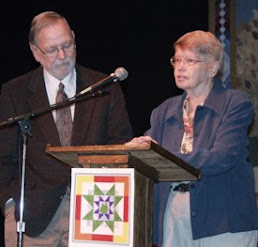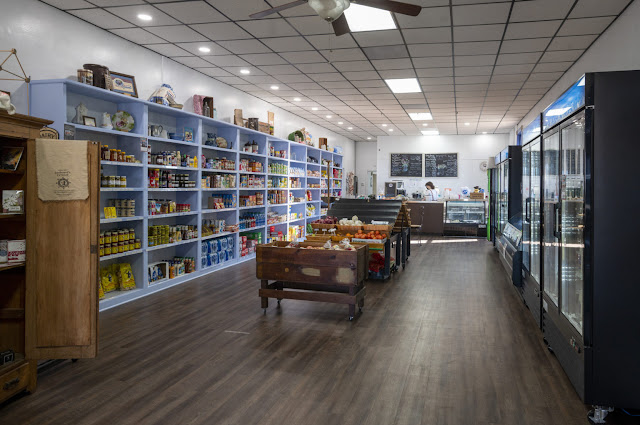 |
| Wendell Berry (Guy Mendes photo) |
Wendell Berry, advocate of the largely rural fundamentals that formed humanity before the Industrial Revolution, gets a big write-up in the Feb. 28 issue of
The New Yorker, from none other than the magazine's executive editor, Dorothy Wickenden. For her, it completes a cycle of nearly 60 years.
The daughter of Berry's first commercial editor, Wickenden draws on his and Berry's correspondence from 1964 to 1977, when the writer, as he acknowledged then, was still discovering himself. But it also offers glimpses of his next book and looks at his legacy, which includes
The Berry Center, which promotes “prosperous, well-tended farms serving and supporting healthy local communities” and the
Wendell Berry Farming Program of Vermont's
Sterling College, which offers a tuition-free college degree in sustainable family farming.
Wickenden's
expansive, 9,384-word article amounts to a short, selective biography of one of America's most loved and yet also scoffed-at writers. She sums up what we know: "Berry’s admirers call him an Isaiah-like prophet. . . . Critics see him as a utopian or a crank, a Luddite who never met a technological innovation he admired." But this is not just history; it offers insight into the land, culture and neighbors that made Wendell Berry, now 87, who he is -- and why he is what he is.
After visiting Berry at his Kentucky farm, Wickenden wrote, "From this sliver of vanishing America, Berry cultivates the unfashionable virtues of neighborliness and compassion. He divides his time between writing and farmwork, continuing his vocation of championing sustainable agriculture in a country fueled by industrial behemoths, while striving to insure that rural Americans—a mocked, despised, and ever-dwindling minority—do not perish altogether."
Berry let Wickenden read, and quote from, his forthcoming book, due this summer: The Need to Be Whole, in which "He argues that the problem of race is inextricable from the violent abuse of our natural resources, and that 'White people’s part in slavery and all the other outcomes of race prejudice, so damaging to its victims,' has also been 'gravely damaging to white people.'"
Wickenden says the book "contains something to offend almost everyone," and her major example is a man Berry calls “one of the great tragic figures of our history,” Confederate Gen. Robert E. Lee. "He presents Lee as a white supremacist and a slaveholder, but also as a reluctant soldier who opposed secession and was forced to choose between conflicting loyalties: his country and his people." She quotes from the book: “Lee said, ‘I cannot raise my hand against my birthplace, my home, my children.’ For him, the words ‘birthplace’ and ‘home’ and even ‘children’ had a complexity and vibrance of meaning that at present most of us have lost.”
Wickenden writes, "If readers were incredulous about Berry’s [1977] claim that a pencil was a better tool than a computer, it’s not hard to imagine how many will react to his plea that we extend sympathy to a general whose army fought to perpetuate slavery in America. Several of Berry’s friends urged him to abandon the book, anticipating Twitter eruptions and withering reviews."
“My friends, I think, were afraid, now that I am old, that I am at risk of some dire breach of political etiquette by feebleness of mind or some fit of ill-advised candor,” Berry writes. “They are asking me to lay aside my old effort to tell the truth, as it is given to me by my own knowledge and judgment, in order to take up another art, which is that of public relations.”
Berry's politically incorrect truth-telling does not extend to his Trump-voting neighbors, 30 miles northeast of Metro Louisville, because that wouldn't be neighborly. He writes, “If two neighbors know that they may seriously disagree, but that either of them, given even a small change of circumstances, may desperately need the other, should they not keep between them a sort of pre-paid forgiveness? They ought to keep it ready to hand, like a fire extinguisher. . . . A society with an absurdly attenuated sense of sin starts talking then of civil war or holy war.”
Wickenden probably didn't realize it, but for some readers those lines will echo in another part of her story, about Berry's connections to Appalachia and the town of Whitesburg, including Tom and Pat Gish, who published
The Mountain Eagle every week for 52 years, even after their office was firebombed by a local policeman who state police said was hired by coal operators. But even as the Gishes revealed the
Tennessee Valley Authority's role in strip mining and helped visiting journalists explore the region's ills, they were always careful not to publish demeaning pictures of local residents like those that typically illustrate such national stories.
That's community journalism. Berry once defined "community" this way: “A community is the mental and spiritual condition of knowing that the place is shared, and that the people who share the place define and limit the possibilities of each other's lives. It is the knowledge that people have of each other, their concern for each other, their trust in each other, the freedom with which they come and go among themselves.”














